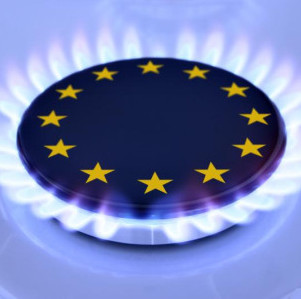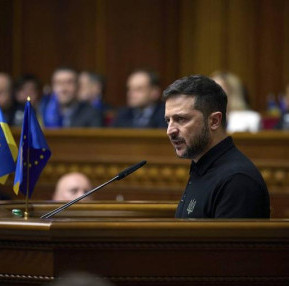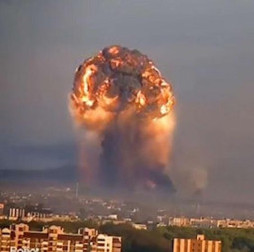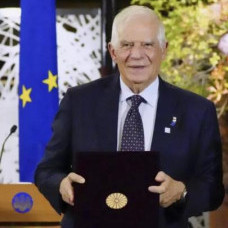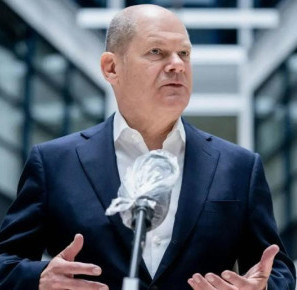Almost Like Chekhov …
There was something elusive it his story from the very beginning. His biography is evidently clear – Radovan Karadzic was born in 1945 in Chernogoria in the family of a guerilla veteran who initially, they say, joined the nationalist movement of Cetniks. However, there were lots of combatants like his father in the early 40s. He graduated from the Sarajevo University and got a degree of mental physician. For some time he worked a psychologist in a famous football team named “Zheleznicar” (the Sarajevo analogue of “Locomotive’). This work expanded his world and gave him an initial public experience. He joined the Union of Communists of Yugoslavia. His further work in medical clinics was combined with creative activities as a playwriter and poet. In the early 90s, he became a recognized member of the Bosnian (still undivided) family of elite intellectuals. They say, he was promoted by Emil Kusturica, a future star film producer. There were also rumors that Karadzic was patronized by Milan Panic, an intermediate” Yugoslavian leader (between Tito and Molosevic) and simultaneously American pharmaceutical tycoon.
Anyway, from the very beginning of the Bosnian ethnic split Karadzic became a key figure of the Bosnian Serbs. Karadzic was welcomed as a leader by the common people because he was neither a party official nor a “egghead” theorist but a representative of the most human profession plus a cultural figure, whose name was always in playbills of theater-studios, which were that time not less popular in Sarajevo than those in Leningrad. What did happen to his country if an initially moderate leader of the Serbian Democratic Party of Bosnia (opponent to radicals of any colors) became a faithful leader of the national movement in this republic?
Skinned and Beheaded Yugoslavia
The history of Yugoslavian tragedy is written in ethnically isolated rooms on geopolitically separated floors. So, where will we find the truth that would serve as a lesson to us? Belluim omnium contra omnes (“the war of all against all”) was provoked by the loss of power after the death of charismatic Marshal Tito in 1980. Mutual exasperation of the Orthodox Christians, Catholics and Muslims speaking the same language (therefore sometimes they even put themselves in opposition to Russians, Western Byelorussians and, for example, Bashkirs) promoted extra brutality of the intragroup conflict. The sequence of Yugoslavian ruptures of the early 90s is rather noteworthy : initially Catholic Croats marched out against all others. In response the Serbs and later Muslims stepped up. Then each of the sides got worried of its ethnic purity. To save time each of “the nationally reviving” sides started killing all “aliens” and together with them all fellow-travelers, plus those who did not know the second line of “Our Father, which art is Heaven…”, circumcised, former Communists, Cetniks and Ustashas. Against this background Radovan Karadzic became a political figure. Today he is accused of a 52-week blockade of Sarajevo but first of all he is accused of a massacre in the town of Srebrenica. In total both operations cut off 20 thousand lives of his former compatriots and at least 280 thousand people according to theoretical conclusions buried under crosses and columns. Does this cynical ethnic spacing of the grave “markers” explain who and why acted with edificatory brutality? The casualties totaled: 120 thousand Serbs, 90 thousand Croats and 70 thousand Muslims. That time, in 1992, Sarajevo Serbs established a blockade of Sarajevo shooting at “every shadow-figure” in the windows of the flats from where they have been just expelled. The captured snipers might expect just killing only in case of good relations with former neighbors. As a rule, there were alive cut in pieces in the Olympic arena Zetra that became an anti-blockade HQ. This arena still remembers the echo of our victory at the hockey championship and agony of hundreds of former our fans. Is it wise now to command “avenge”, which sounds today again as “fire”? Is it really important for us to know the names of those on each side who gave an order: “No step back!”?
Yet massive ethnic cleansings started in Croatia and Croatian part of Bosnia, where more than million Serbs resided. It was that time when a chief military adviser of Croats and in fact their armed forces Commander-in-Chief was 4-star American General Vuono, former Chief of Staff of the US Army. This fact just as other events of the Yugoslavian tragedy is spoken about in a low voice for some reason. In particular, nobody speaks about the fact that Russian journalists Kurennoy and Noghin most probably were murdered because they wanted to tell the world community about perhaps an only case of actual reconciliation between Serbs and Croats in the town of Kostainica. In September 1992, this news “hindered in political reconstruction” in the Balkans.
The cannibalistic extermination of Serb Kraina already finished when Devil of War stoke on Muslim Srebrenica… Let assumptions, morbid anatomic in its cynicism, add a paragraph of the Hague indictment. This Muslim enclave was an HQ of Naser Oric, by the way a former bodyguard of Milosevic. By the efforts of this bodyguard a Serbian village of Visice adjacent to Srebrenica witnessed about 3,000 mostly beheaded bodies on the Christmas Eve of 1993. Only in July 1995, about 200 (only!) rather “motivated” combatants under command of ethnic Serb Krstic invaded this enclave. The guerilla chronicles have no records to what extent this field commander in this particular case was under command of Bosnian-Serbian Commander Mladic and the latter - of Karadzic. But this raid, according to the Serbian side, was caused by a massive murder of Serbian refugees from Kraina by Oric combatants. The Serbian unit was allowed to enter the town by Euro-tolerant Dutch Colonel Nom Karremans, a UNPROFOR battalion commander. Today nobody knows how many and what people in fact were in Srebrenica that time. Later 1937 bodies have been found. How did 200 combatants watched by the UN troops managed to kill 8,000 people, as “it was specified later”? It is a test on common sense. Moreover about 35,000 of 40,000 residents of Srebrenica by that time have left for Muslim areas of Bosnia.
A summary instead of the answer: Oric has been discharged at the Hague Tribunal. Krstic has been sentenced to 46 years in prison by the Same Tribunal. Location of General Mladic was not known in July 1995, neither it is known today. Colonel Tom Karremans has incurred no liability…
Nothing But Assumptions
After Srebrenica Karadzic remained a de-facto leader of Bosnian Serbs. In this quality he was ready to visit Deiton (USA) to sign a so-called framework peace agreement. Last moment he was replaced by “all-Serbian” leader Milosevic who thus became a guarantor of this agreement. However, it is not quite clear why on the Bosnian part it was signed only by Muslim leader Izetbegovic. In the legal sense it means that the Bosnian Serbs still are at war.
Karadzic disappeared in late 1995. Rather informed people assume that both Belgrade and the West kept a wary eye on him rather than tried to detain him. It is not excluded that he accepted the rules of the game thinking that being unfound he is much safer for many people. Numerous rumors about his location (from Greece to Belorussia) created an illusion of universal concern meanwhile Karadzic lived in Belgrade all this time Nobody spoke about it loudly but there are rumors and “rumors”. Certain of them may be constructed in a rather logical sequence. Especially when the people in Belgrade streets said that Premier Djindjic was killed in 2003 because he was going to make this widely known secret public. That time the conditions for this step have not matured yet.
"National Communist” Milosevic was deported to Hague in 2001 inter alia because he was not active very much in finding of Karadzic. The Milosevic’s successor – Kostunica was supported by the West for some time for his democratic ”uncomplying attitude” in a precarious intra-Serbian situation. And also for the fact that he “surrendered” Monte Negro “like a lamb”. But it is quite probable that in July 2007 he was also reminded about “the factor of Karadzic” when NATO men arrested a son of the former Bosnian Serb leader. “Street conspiracy analysts” assume that it just happened after the son met with his father. Today Western observers believe that Democrat Kostunica became a rear-support man of Liberal Tadic rather than his opponent. And since Kostunica also “could have guessed right” about the location of Karadzic, he is politically vulnerable. Especially if he makes efforts to build a block with the Socialists-Nationalists shifted to the third position.
Tadic surrendered Karadzic in the proper time. Tadic became a European “hero” who has no backing space in his Homeland. All rumors that it was Mladic who surrendered his former comrade-in-arms look like an attempt to discredit Mladic by into-propaganda methods. The delay in Karadzic’s deportation to Hague suggests that “multilateral consultations” with him are in progress. For he may say something unwanted in Hague. If his health proves to be stronger than the Milosevic’s one.
